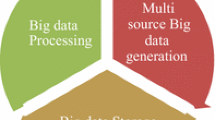Abstract
Current research still cannot effectively prevent an inference attacker from inferring privacy information for k-anonymous data sets. To solve the issue, we must first study all kinds of aggressive reasoning behaviors and process for the attacker thoroughly. Our work focuses on describing comprehensively the inference attack and analyzing their privacy disclosures for k-anonymous data sets. In this paper, we build up a privacy inference graph based on attack graph theory, which is an extension of attack graph. The privacy inference graph describes comprehensively the inference attack in k-anonymous databases by considering attacker background knowledge and external factors. In the privacy inference graph, we introduce a concept of valid inference path to analyze the privacy disclosures in face of inference attack. According to both above, we design an algorithm to compute the n-valid inference paths. These paths can deduce some privacy information resulting in privacy disclosure. Moreover, we study the optimal privacy strategies to resist inference attack by key attribute sets and valid inference paths in the attack graph. An approximate algorithm is designed to obtain the approximate optimal privacy strategy set. At last, we prove the correctness in theory and analyze the performance of the approximate algorithm and their time complexity.


Similar content being viewed by others
References
Samarati P, Sweeney L (1998) Protecting privacy when disclosing information: k-anonymity and its enforcement through generalization and suppression. In: Technical Report SRI-CSL-98-04
Machanavajjhala A, Gehrke J, Venkitasubramaniam M (2006) l-diversity: privacy beyond k-anonymity, In: Proceedings of ICDE
Li N, Li T, Venkatasubramanian S (2007) t-Closeness: privacy beyond k-anonymity and l-Diversity. In: Proceedings of ICDE, pp 106–115
Wong RC, Li J, Fu AW et a1 (2006) (α, k)-Anonymity:an enhanced k-anonymity model for privacy-preserving data publishing. In: Proceedings of the 12th ACM SIGKDD, ACM Press, New York, pp 754–759
Terrovitis M, Mamoulis N, Kalnis P (2008), Privacy preserving anonymization of set-valued data. In: VLDB, pp 115–125
Sun Y, Yan H, Lu C, Bie R, Zhou Z (2014) Constructing the web of events from raw data in the Web of Things. J Mob Inform Syst 10:105–125
Guo J, Zhang H, Sun Y, Bie R (2013). Square-root unscented Kalman filtering-based localization and tracking in the Internet of Things, Personal and Ubiquitous Computing
LeFevre K, DeWitt DJ, Ramakrishnan R (2005) Incognito: efficient full-domain k-anonymity. In: Proceedings of the ACM SIGMOD International Conference on Management of Data, pp 49–60
Ye X, Jin L, Li B (2008) A multi-dimensional k-anonymity model for hierarchical data, Electronic Commerce and Security, 2008 International Symposium, pp 327–332
LeFevre K, DeWitt DJ, Ramakrishnan R (2006) Workload-aware anonymization. In: Proceedings of the 12th ACM SIGKDD International Conference on Knowledge Discovery and Data Mining, Philadelphia
Xiao X, Tao Y (2007) M-invariance: towards privacy preserving re-publication of dynamic datasets. In: Proceedings of SIGMOD, ACM Press, New York, pp 689–700
Yingyi Bu, Ada Wai-Chee Fu, Raymond Chi-Wing Wong, Lei Chen, Jiuyong Li, Privacy preserving serial data publishing by role composition. In: VLDB, pp 845–856
Xiao X, Tao Y (2006) Personalized privacy preservation. In: Proceedings of ACM Conference on management of Data (SIGMOD). ACM Press, New York, pp 785–790
Li T, Li N, Jian Z (2009) Modeling and integrating background knowledge in data anonymization. In: Proceedings of the 25th International Conference on Data Engineering. IEEE Computer Society, Los Alamitos, pp 6–17
Ammann P, Wijesekera D, Kaushik S (2002) Scalable, graph-based network vulnerability analysis. In: Proceedings of the 9th ACM Conference on Computer and Communications Security. ACM Press, New York, pp 217–224
Jha S, Sheyner O, Wing J (2002) Two formal analyses of attack graphs. In: Proceedings of the 15th IEEE Computer Security Foundations Workshop. IEEE Computer Society, Cape Breton, pp 49–63
Noel S, Jajodia S, O’Berry B, Jacobs M (2003) Efficient minimum-cost network hardening via exploit dependency graphs. In: Proceedings of the 19th Annual Computer Security Applications Conference. IEEE Computer Society Press, Las Vegas, pp 86–95
Acknowledgments
This work was supported in part by the national Natural Science Foundation of China (No. 61100181, No. 61070186) and the National High Technology Research and Development Program of China (863 Program) (No. 21013AA014002).
Author information
Authors and Affiliations
Corresponding author
Rights and permissions
About this article
Cite this article
Sun, Y., Yin, L., Liu, L. et al. Toward inference attacks for k-anonymity. Pers Ubiquit Comput 18, 1871–1880 (2014). https://doi.org/10.1007/s00779-014-0787-y
Received:
Accepted:
Published:
Issue Date:
DOI: https://doi.org/10.1007/s00779-014-0787-y




